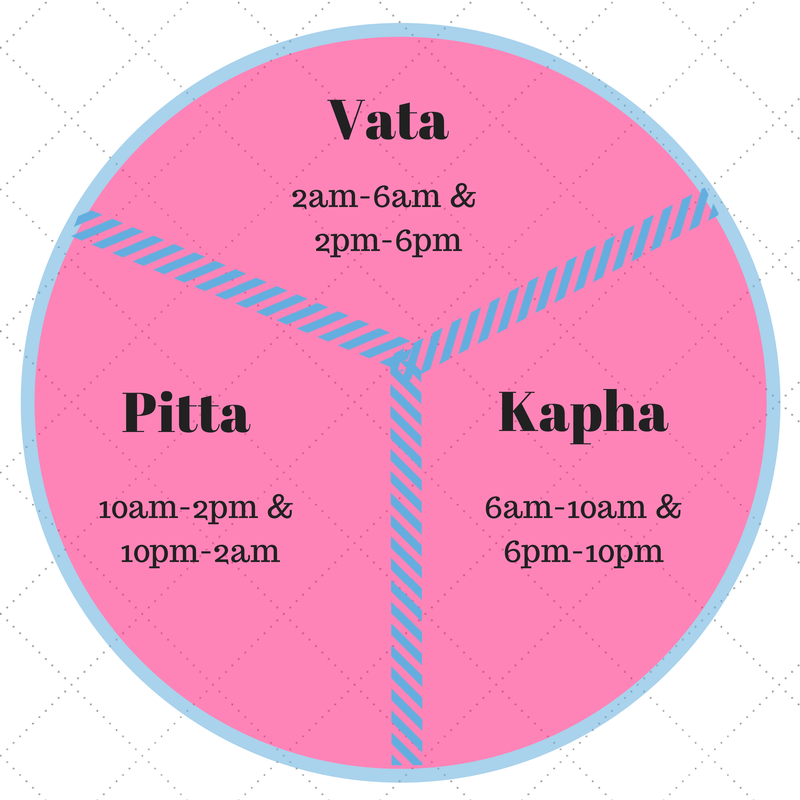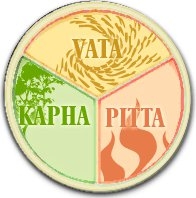Welcome to fall! Well, not technically, but the autumnal equinox that marks the official beginning of a new season is on Tuesday, September 23rd. Some of you may already feel like it’s fall depending on the weather where you live. Heck, South Dakota decided to skip fall and go straight to winter! Others might feel that when kids go back to school, summer is over. For most of us in the US, stuff starts to shift after Labor Day Weekend.
In Ayurveda, fall is Vata season.
For those of you that need a quick refresher on what Vata means, Vata is the dosha comprised of the elements air and ether (space). Qualities of the Vata dosha include cool, dry, movement, and light (weight). All of this makes total sense when you think about what makes fall fall.
In most places in the United States, fall marks the beginning of cooler weather. Sometimes it can be windy – remember growing up and hearing the crunching of dry leaves on the ground?
Fall also tends to be the time when schedules get out of control. There is tons of movement as we prepare for Thanksgiving and Christmas. With kids back in school there are new group sports practices and games to attend, after-school activities, etc. Plus, work starts to pick up as people realize they need to get stuff done before the end of the year.
If you are a Vata person, this is the season to particularly pay attention to in terms of balancing your dosha. For the Pittas and Kaphas out there, it’s still a good idea to make slight changes to your daily routine to stay balanced with the season. We’ll be in Vata season until Spring, so you’ve got a good amount of time to get the hang of it.
Here are some suggestions for ways you can alter your daily and seasonal routine to stay healthy and balanced. Committing to these suggestions can help keep that infamous fall cold at bay!
Suggestions for your Vata Daily Routine
- The key for balancing Vata is habit and routine. Since Vata is so prone to movement, there is a tendency to get swept away by all the commotion. Staying grounded and calm is the best medicine for Vatas during fall.
- Commit to a routine that you can practically stick to every day. Yes, it would be ideal to meditate 30 minutes in the morning and 30 minutes in the afternoon, do an oil self-massage with warm oil, take a yoga class every day, and eat stews and steamed veggies every day, but let’s be honest.
- Consider meditating every morning or practicing some breath work (pranayama). Alternate Nostril Breathing is especially grounding for Vatas.
- Abhyanga, or oil self massage with a good quality sesame oil will help keep your joints lubricated and soothe stress
- Wash your face with warm water and take warm showers.
- Minimize stress in your life by creating a stress-reduction routine that you can practice every day. It might be as simple as burning incense, listening to peaceful music, or reading a nice book, or as complex as taking a hot bubble bath or getting a weekly massage. Pick something practical that will bring you peace and keep you present and practice it daily.
- Avoid extreme mental strain or over-exertion. If you feel tired, emphasize rest and nourishment.
- Make sure you’re prioritizing sleep. Vatas are prone to insomnia, so the more you habitualize your self-care, the more you should see an improvement in your inability to sleep.
- Choose environments that are calming, or invest in calming essential oils (lavender, cedar, sage, geranium, juniper). Now’s a great time to create a dedicated yoga/meditation space in your home if you have the space.
- Wear warm colors like red, yellow, or orange, or choose appropriately colored fall decor to help you create your own peaceful, warm oasis.
- Stay warm. Wear scarves, socks, and hats when the cool air starts to give you goose bumps.
Suggestions for Vata Exercise
- Vatas need to stay warm but they don’t need super intense physical exertion. Remember, we’re already in a season that is mobile – adding too much movement will push Vata out of balance.
- Yoga is the best exercise for Vatas, especially during Vata season. You may practice in a heated studio, but again, moderation is key. Hatha styles of yoga suit Vatas quite well, as do restorative, yin, and more meditative styles.
- If you’re going to take a walk, make sure you’re dressed appropriately and will stay warm. Avoid physical exercise outdoors on particularly cold, dry, windy days. Chances are you’ll have no desire to be out in the elements anyway.
Suggestions for Vata Diet
- When you think about the cold, dry, rough qualities of Vata, these are the same qualities you’ll find in raw foods. Fall is the time for warm soups and stews, and Vatas will feel best if they heed this seasonal wisdom.
- Avoid raw foods (vegetables, fruits, salads). What! No salads? That’s the best diet ever, right? (Unless you love salads.)
- Favor a diet with foods that are warm, moist, and heavy. Think vegetable stews, lentils, spiced cider, stewed apples, etc. Or what we typically crave in fall anyway. Ayurveda is smart like that.
- Eat small, frequent, regular meals
- Oatmeals, vegetable stews, rice are all great food options for Vata
- Use warming spices such as cumin, ginger, cinnamon.
- Avoid cold drinks and ice cream – I know, this might be the hardest one of all. If you’re going to drink fresh juice or smoothies, make sure you hold back on the ice and let it sit for a while if you’re taking it right out of the refrigerator.
- Avoid or minimize stimulants such as alcohol, coffee, and tea (herbal tea is fine).
- Drink lots of warm water.
While there are plenty of things you can do to perfectly balance Vata, it is most important to listen to your own body and become aware when things start to feel a little off. Just as you would take an Advil when you have a headache, pick one of these remedies when you start to feel a little frenzied, out of control, tired, or empty. These are the first signs that something isn’t quite right and taking early preventative measures can get you back on track before you ever experience any physical pain or illness.
Happy Fall!






